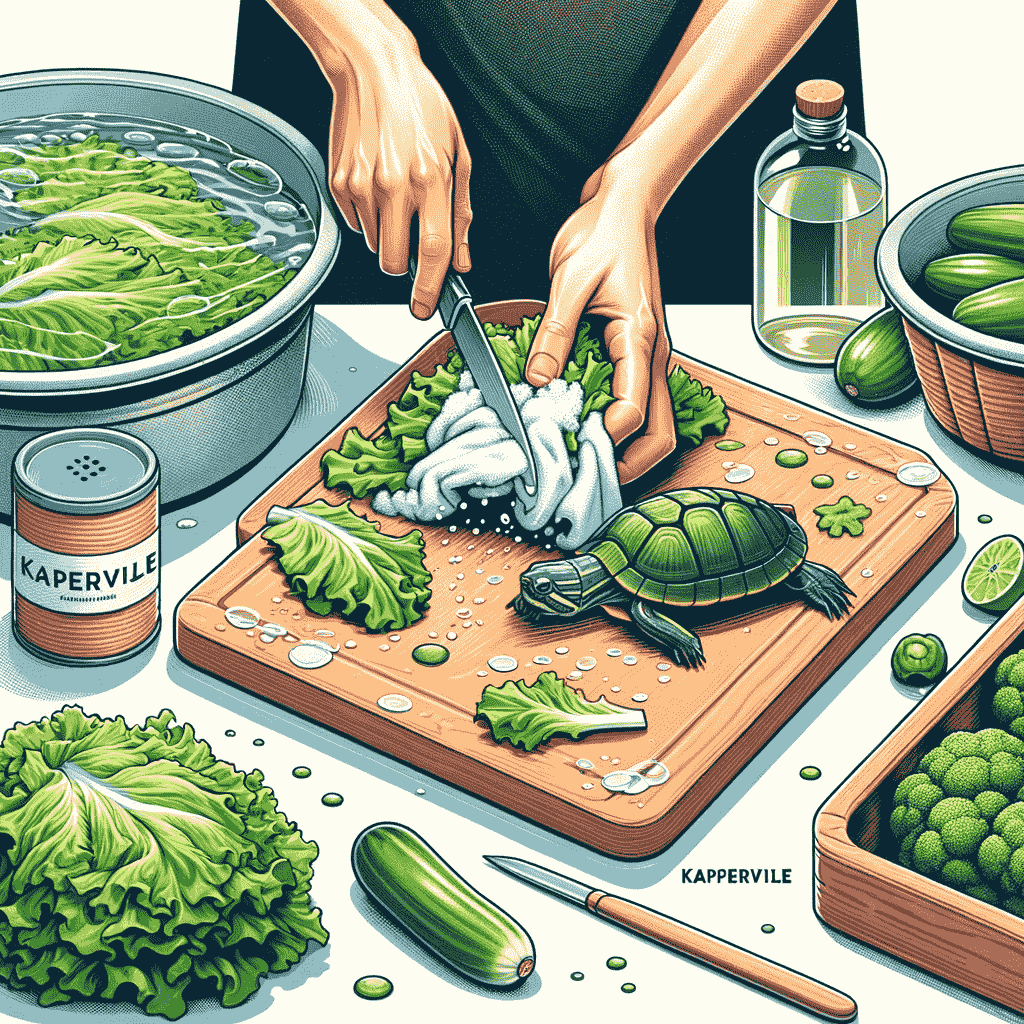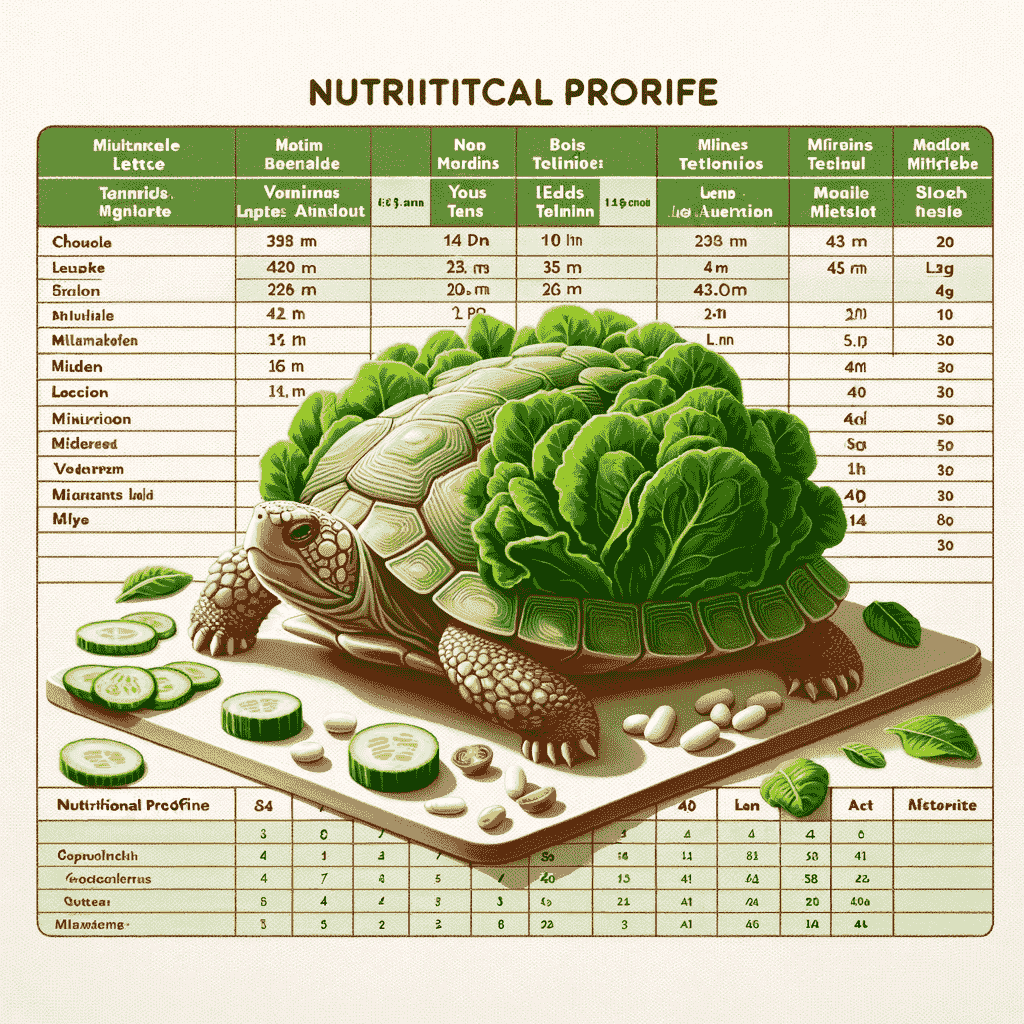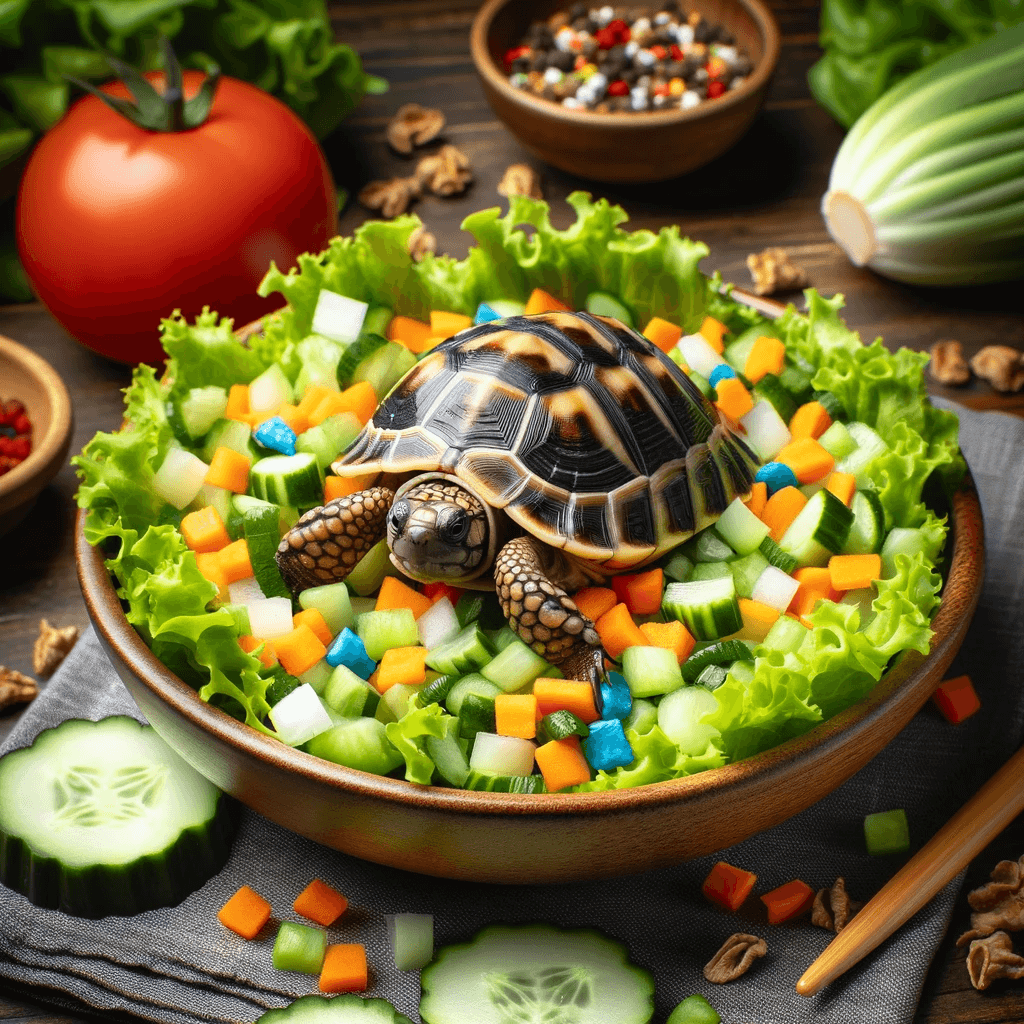Lettuce, a common leafy green in human diets, may seem like a natural choice for box turtles. However, it’s important to consider its nutritional value and how it fits into a turtle’s diet. In “Can box turtles eat lettuce?”, we’ll investigate the types of lettuce suitable for turtles and discuss their potential health benefits and limitations. While lettuce is known for its high water content, it’s essential to understand its overall nutritional profile to ensure it contributes positively to your turtle’s health.

Can Box Turtles Eat Lettuce?
Lettuce can be a part of a box turtle’s diet, but its nutritional value varies significantly depending on the type. Generally, darker, leafier types of lettuce, like romaine or red leaf lettuce, are preferable due to their higher nutrient content compared to iceberg lettuce.
Nutritional Benefits:
- Vitamins: Darker lettuces contain vitamins A and K, important for vision and blood clotting.
- Hydration: High water content in lettuce aids in hydration.
Considerations:
- Low in Calories: Lettuce is low in calories, which means it can’t be the sole source of nutrition.
- Limited Nutrients: Compared to other vegetables, lettuce may lack essential nutrients like protein and calcium.
Given its limitations, lettuce should be part of a balanced diet that includes a variety of vegetables and protein sources. It’s best used as a supplement rather than a primary food.

How to Feed Lettuce to Turtles?
Feeding lettuce to box turtles is straightforward, but there are some tips to ensure it’s done safely and nutritiously.
Preparation Steps:
- Wash Thoroughly: Clean the lettuce to remove any pesticides or contaminants.
- Chop Appropriately: Cut the lettuce into small, manageable pieces that are easy for the turtle to eat.
Feeding Guidelines:
- Frequency: Include lettuce in the turtle’s diet a few times a week, alongside other vegetables.
- Quantity: Serve it in moderation, ensuring it’s not the only vegetable offered.
- Variety: Mix lettuce with other nutrient-rich vegetables for a well-rounded diet.
Additional Tips:
- Type of Lettuce: Opt for darker varieties like romaine or red leaf over iceberg, as they offer more nutritional benefits.
- Observation: Monitor your turtle’s response to lettuce, ensuring it’s well-tolerated and enjoyed.
By following these guidelines, lettuce can be a healthy and hydrating addition to your box turtle’s diet.

Lettuce Nutrition Facts
Lettuce, particularly the darker varieties, provides several nutrients beneficial for box turtles:
- Vitamin A: Supports vision and immune function.
- Vitamin K: Important for blood clotting and bone health.
- Hydration: High water content helps with hydration.
However, lettuce is generally low in calories and lacks significant amounts of protein and calcium, which are crucial for a turtle’s diet.
Nutritional Breakdown:
- A good source of fiber.
- Contains small amounts of minerals like potassium and magnesium.
Understanding the nutritional content of lettuce is important for incorporating it into a turtle’s diet effectively and responsibly.
Do Box Turtles Like Lettuce?
Box turtles often enjoy eating lettuce, particularly due to its soft texture and high water content. However, individual preferences can vary, and some turtles may prefer other types of vegetables.
Introducing Lettuce:
- Start with small portions to see if your turtle likes lettuce.
- Offer different types of lettuce to find the one they prefer.
If your turtle enjoys lettuce, it can be a hydrating part of their diet, but always ensure it’s balanced with other nutrient-rich foods.
Health Risks For Box Turtles Eating Lettuce
While lettuce is safe for box turtles, it’s important to be aware of potential health risks associated with feeding it improperly.
Risks and Considerations:
- Nutritional Imbalance: Lettuce, especially iceberg, is low in essential nutrients. Relying too heavily on it can lead to nutritional deficiencies.
- Pesticides and Contaminants: If not washed properly, lettuce can carry harmful chemicals.
Mitigating Risks:
- Feed lettuce as part of a varied diet.
- Wash thoroughly to remove potential contaminants.
By understanding these risks and feeding lettuce appropriately, it can be a safe and enjoyable part of your box turtle’s diet.

How Much Lettuce Should Box Turtles Eat?
The amount of lettuce to feed box turtles depends on their overall diet and nutritional needs. It should be considered a supplement rather than a staple.
Feeding Guidelines:
- A few leaves of lettuce a few times a week is sufficient.
- Balance lettuce with other vegetables and protein sources.
By following these guidelines, you can include lettuce in your turtle’s diet without risking nutritional imbalances.
How Do You Prepare a Lettuce Recipe For Turtles?
Creating a lettuce-based dish for box turtles can add variety to their diet. Here’s a simple recipe that combines nutrition and taste:
Recipe Steps:
- Chop Lettuce: Cut the lettuce into small pieces.
- Mix with Other Ingredients: Combine lettuce with other vegetables like shredded carrots or squash.
- Add Protein: Include a protein source, such as cooked chicken or tofu.
- Calcium Supplement: Sprinkle a calcium supplement for added nutrition.
Serving Tips:
- Serve this mix several times a week alongside other turtle foods.
- Adjust the ingredients based on your turtle’s dietary needs.
This recipe offers a balanced meal with the hydration benefits of lettuce.
Can Baby and Senior Box Turtles Eat Lettuce?
Lettuce can be included in the diets of both baby and senior box turtles, but it should be tailored to their specific needs.
For Baby Turtles:
- They require more protein, so lettuce should only be a small part of their diet.
- Ensure that the lettuce is finely chopped for easy consumption.
For Senior Turtles:
- They may have more specific dietary requirements and may benefit from the soft texture of lettuce.
- Ensure the lettuce pieces are small and manageable.
By considering these factors, lettuce can be safely included in the diets of turtles at different life stages.
Professional Advice
Consulting with a veterinarian or reptile nutritionist is recommended when incorporating lettuce or other new foods into a box turtle’s diet. They can provide specific advice based on the turtle’s health and dietary needs. For credible information on turtle care, consult resources like the Association of Reptilian and Amphibian Veterinarians (ARAV).
Conclusion
In conclusion, lettuce can be a part of a box turtle’s diet when included appropriately. Its high water content offers hydration benefits, but it should be balanced with other nutrient-rich foods to ensure a well-rounded diet. Tailor the diet to your turtle’s specific needs, introduce lettuce gradually, and prioritize a diverse diet for optimal health. For the best dietary guidance, consult a reptile nutrition expert or veterinarian.
Can box turtles eat all types of lettuce?
Yes, turtles can eat various types of lettuce, but darker varieties like romaine are more nutritious than iceberg.
Is lettuce enough to sustain a box turtle’s diet?
No, lettuce should be supplemented with other vegetables and protein sources for a balanced diet.
How often should I feed lettuce to my box turtle?
Lettuce can be included a few times a week, ensuring it’s part of a varied diet.
Do I need to chop lettuce for my turtle?
Yes, chopping lettuce into smaller pieces makes it easier for turtles to eat.
Can overfeeding lettuce cause health problems?
While lettuce is safe, overfeeding can lead to nutritional imbalances. It’s important to feed it in moderation.
What other vegetables can I feed my turtle along with lettuce?
Other suitable vegetables include carrots, squash, bell peppers, and leafy greens like kale.
How do I know if lettuce is negatively affecting my turtle?
Monitor your turtle for any changes in behavior, appetite, or digestion. Consult a vet if you notice any concerns.

